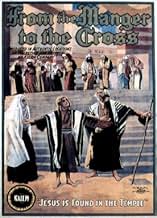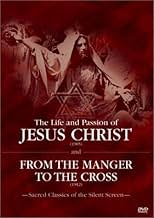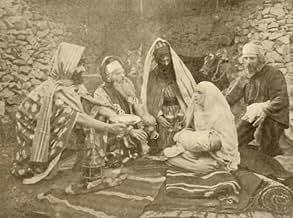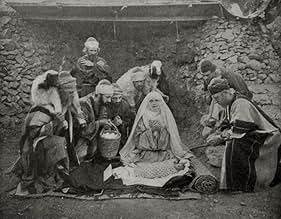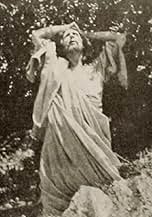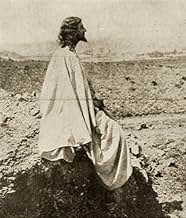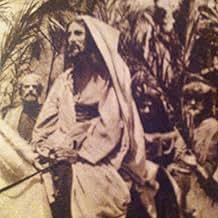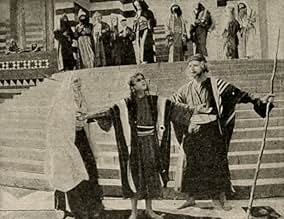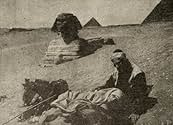An account of the life of Jesus Christ according to the New Testament, told as a series of tableaus interspersed with Bible verses.An account of the life of Jesus Christ according to the New Testament, told as a series of tableaus interspersed with Bible verses.An account of the life of Jesus Christ according to the New Testament, told as a series of tableaus interspersed with Bible verses.
- Awards
- 1 win total
R. Henderson Bland
- Jesus - the Man
- (as Robert Henderson-Bland)
Sidney Baber
- Thaddeus
- (uncredited)
G. Howard Barton
- Wise Man 3
- (uncredited)
F.T. Bostock
- Second Thief
- (uncredited)
Frederic Bryson
- St. John
- (uncredited)
J.J. Clark
- John
- (uncredited)
Ralph T. Duncan
- Simon
- (uncredited)
Lydia Gardebeau
- Salomé
- (uncredited)
Frank T. Gregory
- St. Andrew
- (uncredited)
Denton Harcourt
- St. Matthew
- (uncredited)
- Director
- Writer
- All cast & crew
- Production, box office & more at IMDbPro
Storyline
Did you know
- TriviaIronically, R. Henderson Bland was selected for the role of Jesus in a silent film because star/director Sidney Olcott liked the way his voice sounded on the telephone.
- GoofsJesus is shown healing Bartimaeus from his blindness but the verse used was Matthew 20:34 where he heals 2 blind men instead of 1. Using the Mark or Luke passage would have made this scene accurate.
- Alternate versionsThe Vitagraph Co. of America released a six reel re-edited version of the film after it acquired Kalem's properties in 1919.
- ConnectionsFeatured in The Great Christmas Movies (1998)
Featured review
This movie is not the first feature picture. That distinction appears to go to an Australian film, NED KELLY AND HIS GANG from about 1906. Others, particularly the Italians, had made a few films of more than a couple of reels before FROM THE MANGER TO THE CROSS came out. Nonetheless, this movie is historically very important as the first American feature..... and much of it was shot on location in Egypt and what was then Palestine. It was an enormous undertaking in its time and deserves our respect.
But, does that mean it is worth seeing? Well, if you are fascinated by the history of the film, yes. If you are unfamiliar with silent film techniques, then no, almost certainly not.
This film is shot as a series of tableaux. In the films of D.W. Griffith and others of his line, the titles explain the picture. In tableaux, the pictures illuminate the text of the titles, like an illustrated edition of a novel. Given the average American's familiarity with the subject of this movie -- the life and death of Jesus Christ -- and the use of quotes from the New Testament as titles, this is precisely the effect of FROM THE MANGER TO THE CROSS: an exciting one, for people who never got to travel further than downstate. To a modern audience, however, it will seem static, as this style of moviemaking went out of style by about 1920.
Second, there are the anachronisms. Cities are shown in their modern guises and if Jesus never saw the walls of Nazareth reared by the Crusaders, so much the worse for the moviegoer. If the nose of the Sphinx was battered off some time between 700 and 1000 AD, someone viewing this picture would never know it, given that Jesus, Joseph and Mary are shown sitting in front of the Sphinx and a pyramid to illustrate the Egyptian exile.
So there are problems with this movie that make it something not to be recommended to the average, or even above-average moviegoer. However, if you love films for their own sake, give it a look.
But, does that mean it is worth seeing? Well, if you are fascinated by the history of the film, yes. If you are unfamiliar with silent film techniques, then no, almost certainly not.
This film is shot as a series of tableaux. In the films of D.W. Griffith and others of his line, the titles explain the picture. In tableaux, the pictures illuminate the text of the titles, like an illustrated edition of a novel. Given the average American's familiarity with the subject of this movie -- the life and death of Jesus Christ -- and the use of quotes from the New Testament as titles, this is precisely the effect of FROM THE MANGER TO THE CROSS: an exciting one, for people who never got to travel further than downstate. To a modern audience, however, it will seem static, as this style of moviemaking went out of style by about 1920.
Second, there are the anachronisms. Cities are shown in their modern guises and if Jesus never saw the walls of Nazareth reared by the Crusaders, so much the worse for the moviegoer. If the nose of the Sphinx was battered off some time between 700 and 1000 AD, someone viewing this picture would never know it, given that Jesus, Joseph and Mary are shown sitting in front of the Sphinx and a pyramid to illustrate the Egyptian exile.
So there are problems with this movie that make it something not to be recommended to the average, or even above-average moviegoer. However, if you love films for their own sake, give it a look.
Details
- Release date
- Country of origin
- Languages
- Also known as
- Jesus of Nazareth
- Filming locations
- Production company
- See more company credits at IMDbPro
- Runtime1 hour 11 minutes
- Color
- Sound mix
- Aspect ratio
- 1.33 : 1
Contribute to this page
Suggest an edit or add missing content

Top Gap
By what name was From the Manger to the Cross (1912) officially released in Canada in English?
Answer
